



 Welcome to “Up Close and Personal.” For every interview I will be introducing a literary personality discussing their views and insights, as well as upcoming literary events around the world.
Welcome to “Up Close and Personal.” For every interview I will be introducing a literary personality discussing their views and insights, as well as upcoming literary events around the world.Today’s interview is with Margaret Maron, she was born and grew up in central North Carolina. She has also lived in Italy. She and her husband, artist Joe Maron, lived in Brooklyn before returning to her home state where they now live.
She is the author of numerous short stories and more than 20 mystery novels to date. One series of novels features Sigrid Harald, a loner lieutenant in the NYPD whose policeman father was killed in the line of duty when she was a toddler. Another series follows the adventures of Judge Deborah Knott, attorney and daughter of an infamous North Carolina bootlegger.
Her 1992 novel Bootlegger's Daughter was a Washington Post bestseller and has won nearly every major prize given to mystery fiction for her novels about North Carolina judge Deborah Knott.
Her awards includes the following: Edgar, Anthony, Agatha and Macavity awards. She has since won additional Agatha’s for Up Jumps the Devil (1996), and Storm Track (2000).
Her works have been translated into a dozen languages and are on the reading lists of many courses in contemporary Southern literature.
Ms. Maron is a founding member and past president of Sisters in Crime and of the American Crime Writers' League, and a director on the national board for Mystery Writers of America. She was a keynote speaker at the Great Manhattan Mystery Conclave in 2004 in 2004.
E.I. Would you share some early insight into who you were as a teenager? What were you like? Please tell us more about Margaret Maron -- the woman behind the summer job at the Pentagon, a founding member and former president of Sisters in Crime, former president of MWA, and award-winning writer?
M. Maron: Who I was as a teenager? Shy, awkward, insecure, beset by the usual teenage angst, angst that was complicated by always feeling like an outsider even though I was fairly popular. The Pentagon (Joint Chiefs of Staff) was huge fun though. Lots of single young officers floating through the halls. I was secretary to the colonel who headed the communications department, which was manned by several of those s.y.o.'s, including the naval lieutenant I married. At the time of our first date though, I was dating two other lieutenants, both army.
After marriage, I wrote dozens of short stories but up until my second novel was published, some ten years into my career, I had never met any other writers. This was before mystery conventions and conferences that encourage beginning writers to come and meet their future peers. I never had the nerve to write to one of those mystical creatures and ask for mentoring or even for a cover quote, so I struggled in solitude. With the second book, I stuck my toe into MWA waters and finally found my tribe! It was so wonderful to connect to people with similar interests and enthusiasms, who didn't look at me as if I were crazy when I asked, "If you were going to murder your husband, would you try to make it look like an accident or a robbery gone wrong?"
Getting involved with MWA and then with Sisters in Crime was a way to contribute to the mystery community.
E.I. What is it about the art form of writing that enchants you the most?
M. Maron: I always told myself stories from my earliest memories, but they were ephemeral and evaporated like the morning dew. To be able to write down these imaginary people, these imaginary scenes, and know that they will survive a little longer is extremely satisfying. And occasionally you'll write something that is so satisfying, so dead on, that you sit there awestruck and wonder where did that came from? Unfortunately, those moments are very few and very, very far between.
E.I. Many writers describe themselves as "character" or "plot" writers. Which are you? And what do you find to be the hardest part of writing?
M. Maron: I'm definitely "character." I like to take my characters, put them into an unfamiliar setting and then watch the plot grow out of the interaction of the characters. The hardest part? Keeping the plot and the motivations believably logical. I just can't take the easy way out and let my characters act against the moral code and intelligence I've given them simply because I can't figure out a realistic motivation. Sometimes that means going back and changing the character. More often, it simply means I haven't worked hard enough.
E.I. How do you imagine the audience when you are writing? Do you have sheets of newsprint covered in a story boards all over your walls?
M. Maron: I honestly never think about my readers when I'm writing. I'm telling the story for my own personal pleasure. I begin at the beginning and write straight through to the end. This is why I can't outline. If I knew where the story was going from page one, I'd be bored. I often begin a book without knowing the victim or the killer. In Shooting at Loons, the killer changed four times over the course of the book. I no longer let this worry me. I just go with the flow. So no, no story boards or outlines before the fact. The closest I come to outlining is with a box of old business cards. Whenever I think of a factoid that needs to be worked into the book somewhere, I'll jot a note about it on the back of the car. When I'm ready to begin a new chapter, I'll thumb through the cards to see if this is where that item belongs.
E.I. What was your biggest challenge in writing Death's Half Acre? How did you decide what level of details your reader will accept? Did you work them out in advance, or did they evolve as you wrote the story? How did you overcome these challenges?
M. Maron: If you're asking about the act of murder itself, I seldom dwell on the grisly detail and I try not to sensationalize, so it wasn't much of a problem in that book. In Hard Row, the book before this one, the motivation for that murder came straight out of an actual news story about illegal use of pesticides on one of the large factory farms in our state. I was so horrified and angry, that I literally butchered the victim. As a rule, I don't get very graphic, but I was so emotionally involved in that story that I couldn't help myself. Several of my readers wrote to complain and I was sorry I had shocked them, but the man's crimes were shocking and I got so caught up in the story that when the gore and grisly discoveries continued, I just had to write it down. By contrast, the murders in DHA were almost bloodless.
E.I. In Death's Half Acre, how much of Candace was planned out in your head? How do you know where you will go next with your story?
M. Maron: Candace began as a simple black-and-white character with no redeeming qualities. By the time I got to know her though and to realize how her childhood formed her moral fiber, I could feel a little sorry for her and could understand where she was coming from even though I never really condoned her actions. But my growing sympathy for her did change the way I thought the story was going to go. Again though, when that happens, I just go along for the ride.
E.I. If you were asked to read a page from Death's Half Acre is there one that you would personally select to share with your fans? And why?
M. Maron: I never deliberately write a scene with the idea of having something to read when I give a book talk or do a signing, but I find that there is always something in each book that can be read without spoilers. Often it's one of Deborah's court cases and usually it's something amusing. In this book, that courtroom scene came in Chapter 4 when Deborah hears the case of two women who got into a knock-down-drag-out fight over a chicken that the other woman's dog had killed. I'm always amused by city people who claim to love the country and want to live there, yet are dismayed to find that their cul-de-sac backs up on a working pig farm or that the roads will be clogged with tractors and farm equipment.
E.I. How do you weave so much suspense and elements of information into your stories and yet you keep them so fast-paced?
M. Maron: Suspense? Me? I've never felt I was much good at creating suspense. I do think I'm pretty good at conveying all the information a reader needs to know without breaking the flow of the action, but I've never consciously analyzed what I'm doing or how I'm doing it.
E.I. What did you find to be the hardest part of writing the book? What was your biggest challenge in developing your characters, Candace Bradshaw and Deputy Sheriff Dwight Bryant? Did you work them out in advance, or did they evolve as you wrote the story? How did you overcome these challenges?
M. Maron: As I said before, the hardest thing is to keep it all logical and, at the same time, to allow for serendipity so that the characters can unfold and blossom. I liked it that Candace evolved from a cut and dried static figure to one that eventually evoked sympathy. As for Dwight Bryant, he's been around from the very first. Bloody Kin was a stand-alone and he was the lead detective in that book. Seven years, when I came to create Deborah Knott for Bootlegger's Daughter, he was already in place and has been in almost every book since.
E.I. You are well known in the writing community as a former president Mystery Writers of America, a former president of Sisters in Crime, and as an award-winning writer. Do you ever feel pressure or insecurity, or are you able to separate all that from your own creative process?
M. Maron: I never felt pressure or insecurity presiding over MWA, but there were some tense moments at the helm of SinC when we were getting so much hostility from certain parts of the mystery community because they didn't understand that being pro-women writers did not mean we were anti-male. All we wanted was our fair share of the pie, be it reviews, advances, or promotion. I never felt insecure in what we were doing though because I had the board's support and advice and I have always believed in "sunshine" rules— in open discussions and keeping a clear paper trail to document any actions. (Very few things done in secret remain secret, as too many of our national leaders and celebrities are constantly being reminded, so you might as well keep everything open and aboveboard from the beginning.) I will say that the two years I gave to SinC, first as VP and then as president, probably cost me at least one book and a couple of short stories. The experience and the friendships were worth it, though.
E.I. Ms. Maron, Thank you for contributing to my blog. It has been a pleasure for me to get to know your work a little better. Would you like to end your interview with a writing tip or advice for young aspiring writers?
M. Maron: The only advice I could give is FINISH THE BOOK! Don't even think about editors, agents, advances, publicity tours or any of the other elements until you have a finished book that is the very best book you could possibly write.
To learn more about Margaret Maron, please visit her web site
To purchase her books, please visit AMAZON and Barnes & Noble











.png)



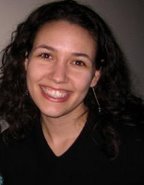



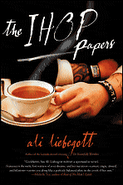
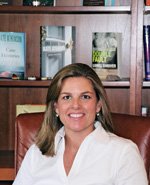
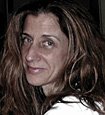
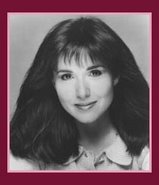






No comments:
Post a Comment